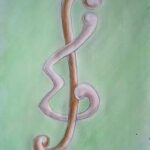
Journal of Combinatorial Mathematics and Combinatorial Computing
ISSN: 0835-3026 (print) 2817-576X (online)
The Journal of Combinatorial Mathematics and Combinatorial Computing (JCMCC) embarked on its publishing journey in April 1987. From 2024 onward, it publishes four volumes per year in March, June, September and December. JCMCC has gained recognition and visibility in the academic community and is indexed in renowned databases such as MathSciNet, Zentralblatt, Engineering Village and Scopus. The scope of the journal includes; Combinatorial Mathematics, Combinatorial Computing, Artificial Intelligence and applications of Artificial Intelligence in various files.
- Research article
- Full Text
- Journal of Combinatorial Mathematics and Combinatorial Computing
- Volume 023
- Pages: 77-85
- Published: 28/02/1997
Both the bandwidth and additive bandwidth of a graph supply information about the storage requirements of a representation of the graph. In particular, the bandwidth measures how far
- Research article
- Full Text
- Journal of Combinatorial Mathematics and Combinatorial Computing
- Volume 023
- Pages: 65-76
- Published: 28/02/1997
A star-factor of a graph
- Research article
- Full Text
- Journal of Combinatorial Mathematics and Combinatorial Computing
- Volume 023
- Pages: 47-63
- Published: 28/02/1997
Let
for each
- Research article
- Full Text
- Journal of Combinatorial Mathematics and Combinatorial Computing
- Volume 023
- Pages: 33-45
- Published: 28/02/1997
A holey perfect Mendelsohn design of type
- Research article
- Full Text
- Journal of Combinatorial Mathematics and Combinatorial Computing
- Volume 023
- Pages: 21-31
- Published: 28/02/1997
Much of chordal graph theory and its applications is based on chordal graphs being the intersection graphs of subtrees of trees. This suggests also looking at intersection graphs of subgraphs of chordal graphs, and so on, with appropriate conditions imposed on the subgraphs.This paper investigates such a hierarchy of generalizations of “chordal-type” graphs, emphasizing the so-called “ekachordal graphs” — those next in line beyond chordal graphs. Parts of the theory of chordal graphs do carry over to chordal-type graphs, including a recursive, elimination characterization for ekachordal graphs.
- Research article
- Full Text
- Journal of Combinatorial Mathematics and Combinatorial Computing
- Volume 023
- Pages: 3-19
- Published: 28/02/1997
We present a new construction to obtain frames with block size four using certain skew Room frames. The existence results of Rees and Stinson for frames with block size four are improved, especially nfor hole sizes divisible by
- Research article
- Full Text
- Journal of Combinatorial Mathematics and Combinatorial Computing
- Volume 023
- Pages: 241-254
- Published: 28/02/1997
It has been proved that the smallest rectangular board on which a
- Research article
- Full Text
- Journal of Combinatorial Mathematics and Combinatorial Computing
- Volume 022
- Pages: 161-182
- Published: 31/10/1996
In this paper, we study the minimum co-operative guards problem, a variation of the art gallery problem. First, we show that the minimum number of co-operative guards required for a
- Research article
- Full Text
- Journal of Combinatorial Mathematics and Combinatorial Computing
- Volume 022
- Pages: 241-253
- Published: 31/10/1996
In this paper, we construct all symmetric
- Research article
- Full Text
- Journal of Combinatorial Mathematics and Combinatorial Computing
- Volume 022
- Pages: 225-239
- Published: 31/10/1996
In this paper, the Desargues Configuration in





